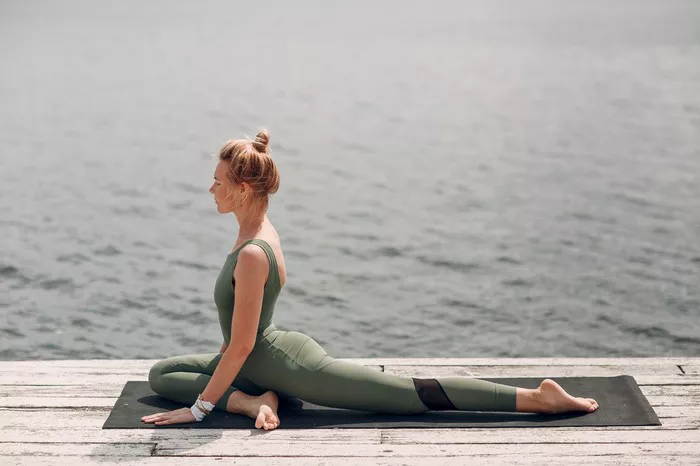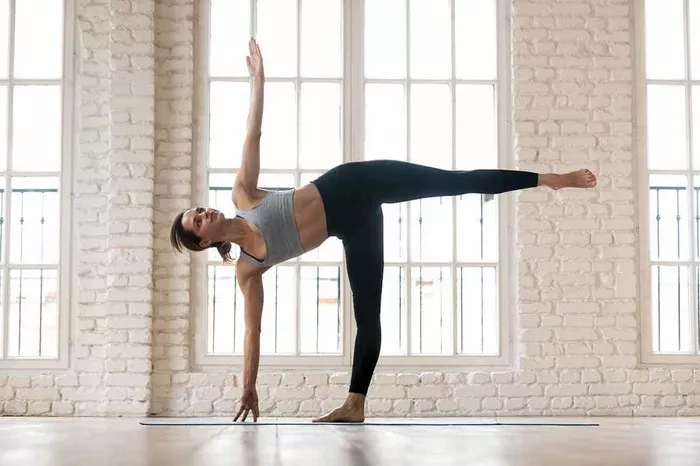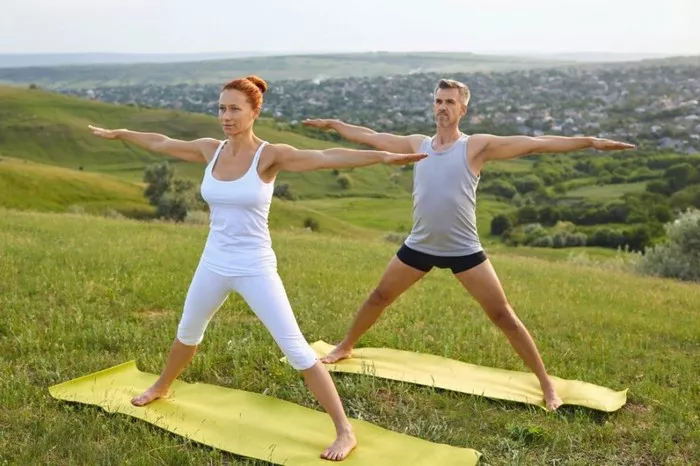Raja Yoga, often referred to as the “royal path” of yoga, is a comprehensive system of meditation and self-discipline that leads one towards the ultimate goal of enlightenment and inner peace. Rooted in the ancient teachings of the Yoga Sutras of Patanjali, Raja Yoga is often seen as a path of mental control, self-realization, and deep connection with the divine. It is considered one of the most direct paths to spiritual awakening and personal transformation.
At the heart of Raja Yoga lies the practice of the “Eight Limbs” or “Eight Steps,” which provide a holistic framework for cultivating mental, physical, and spiritual well-being. These eight limbs are not just isolated practices but are interconnected and designed to complement one another. They guide the practitioner through a series of stages, gradually leading them to the realization of their true nature.
In this article, we will explore each of the eight steps of Raja Yoga in detail, helping you understand their significance and how they can be applied to your life.
1. Yama: Ethical Disciplines
Yama is the first limb of Raja Yoga and refers to the ethical guidelines and moral codes that one must observe in their everyday life. The yamas serve as the foundation for a balanced and harmonious existence, both in terms of how we relate to others and how we relate to ourselves. There are five yamas, which are:
Ahimsa (Non-violence)
Ahimsa is the principle of non-violence and compassion towards all living beings. It goes beyond the avoidance of physical violence, encompassing verbal and mental forms of harm as well. Practicing ahimsa involves cultivating kindness, understanding, and empathy in all interactions.
Satya (Truthfulness)
Satya emphasizes the importance of speaking the truth and living with integrity. It encourages honesty in both thought and action, and calls for transparency in all dealings with others. A commitment to satya fosters trust, authenticity, and clarity in our relationships.
Asteya (Non-stealing)
Asteya encourages us to refrain from taking what does not belong to us, whether it be material possessions, time, or intellectual property. It also extends to mental stealing, such as taking credit for someone else’s work or ideas. Asteya fosters respect for others’ boundaries and resources.
Brahmacharya (Moderation)
Brahmacharya is often interpreted as celibacy, but more broadly, it refers to the practice of moderation and self-control in all aspects of life. It encourages the wise management of energy, particularly in relation to physical desires. By practicing brahmacharya, we can conserve our energy for spiritual growth and avoid excess that may lead to distractions.
Aparigraha (Non-possessiveness)
Aparigraha means non-attachment and non-greed. It involves letting go of the desire to accumulate material possessions or cling to relationships or situations. Practicing aparigraha allows us to cultivate contentment, reduce anxiety, and foster a sense of freedom from worldly attachments.
2. Niyama: Personal Observances
Niyama, the second limb, focuses on personal disciplines or observances that help the practitioner to maintain a healthy body, mind, and spirit. Like the yamas, the niyamas provide a framework for ethical living but are more inwardly focused. There are five niyamas:
Shaucha (Purity)
Shaucha refers to cleanliness and purity, both of the body and the mind. It involves maintaining physical hygiene, eating healthy, and creating an environment that supports well-being. On a deeper level, shaucha also involves purifying the mind by cultivating positive thoughts and eliminating mental distractions.
Santosha (Contentment)
Santosha is the practice of contentment and gratitude. It encourages accepting life as it is, without constant craving for more or dissatisfaction with what we have. Through the practice of santosha, we can develop a sense of inner peace and fulfillment, irrespective of external circumstances.
Tapas (Discipline)
Tapas refers to the inner fire or discipline required to overcome obstacles and remain steadfast on the spiritual path. It encourages self-motivation and perseverance, whether in physical practice (asana), mental focus, or personal development. Tapas strengthens our resolve and helps us stay committed to our goals.
Svadhyaya (Self-study)
Svadhyaya means self-reflection and the study of sacred texts, such as the Bhagavad Gita, the Yoga Sutras, or other spiritual literature. It involves deep introspection and self-awareness, allowing us to recognize our true nature and understand our motivations, habits, and desires. Svadhyaya helps us align our actions with our higher purpose.
Ishvara Pranidhana (Surrender to the Divine)
Ishvara pranidhana is the practice of surrendering to the divine or higher consciousness. It is an acknowledgment that there is a force greater than ourselves that guides and supports us. By practicing ishvara pranidhana, we develop humility and trust, letting go of the ego’s control and allowing divine wisdom to lead our lives.
3. Asana: Physical Postures
Asana, the third limb, refers to the physical postures or poses that form an integral part of yoga practice. The purpose of asanas is not only to improve physical strength, flexibility, and balance but also to prepare the body for meditation by cultivating steadiness and comfort. Practicing asanas with mindfulness helps to regulate the flow of energy throughout the body and calms the mind.
Although asanas are often the most well-known aspect of yoga in the modern world, in Raja Yoga, they are just a means to prepare the practitioner for deeper practices, such as pranayama and meditation. The key is to practice asanas in a way that promotes ease, comfort, and deep awareness of the body.
4. Pranayama: Breath Control
Pranayama is the fourth limb of Raja Yoga and refers to the practice of breath control. The word “pranayama” is derived from “prana,” meaning life force or energy, and “yama,” meaning control. Thus, pranayama involves techniques for regulating the breath, which in turn controls the flow of prana throughout the body and mind.
Breath control helps to quiet the fluctuations of the mind, enhances concentration, and increases energy levels. By practicing pranayama, one can harmonize the body and mind, improve vitality, and prepare the practitioner for deeper states of meditation. Pranayama also aids in the removal of toxins from the body, increases oxygen intake, and promotes overall health and well-being.
5. Pratyahara: Withdrawal of the Senses
Pratyahara, the fifth limb, refers to the practice of withdrawing the senses from external distractions. It involves turning inward and detaching from the sensory stimuli that constantly bombard us in the external world. Through pratyahara, we learn to control the senses rather than be controlled by them, thus reducing mental chatter and developing a deeper sense of focus.
Pratyahara serves as a bridge between the external practices of yoga (such as asana and pranayama) and the internal practices of meditation (dharana, dhyana, and samadhi). By practicing pratyahara, we can create the conditions for a meditative state, free from the distractions of the outside world.
6. Dharana: Concentration
Dharana is the sixth limb of Raja Yoga and refers to concentration or focused attention. It involves fixing the mind on a single object or thought, without distraction. This could be a physical object, such as a candle flame, or a mental object, such as a mantra or a specific image.
The practice of dharana helps to develop the ability to focus and sharpen the mind. It is the precursor to deeper meditation and is essential for cultivating mental discipline. Through dharana, we begin to quiet the mind and cultivate a sense of inner stillness, which is necessary for the practice of dhyana.
7. Dhyana: Meditation
Dhyana is the seventh limb of Raja Yoga and refers to meditation. While dharana is the practice of concentration on a single object, dhyana is the state of deep, uninterrupted meditation, where the practitioner becomes one with the object of their focus. In this state, the mind is calm, clear, and free from distractions.
Dhyana involves prolonged periods of meditation, allowing the mind to go beyond the fluctuations of thought and reach a state of pure awareness. This practice leads to deeper self-awareness, clarity of mind, and the ability to access higher states of consciousness. Meditation allows the practitioner to experience oneness with the divine and discover their true nature.
8. Samadhi: Enlightenment
Samadhi is the final and most advanced stage of Raja Yoga. It is the state of complete absorption or union with the divine. In samadhi, the practitioner experiences a sense of timelessness, transcendence, and oneness with all that is. The ego dissolves, and the individual realizes their true nature, which is pure consciousness.
Samadhi is often described as a state of bliss and enlightenment, where the practitioner is freed from the cycle of birth and death. It is the ultimate goal of Raja Yoga and represents the culmination of all the previous steps. Achieving samadhi requires dedication, practice, and self-realization, but it is the path to liberation and spiritual freedom.
Conclusion
The eight steps of Raja Yoga provide a comprehensive and systematic approach to achieving mental clarity, spiritual awakening, and self-realization. By following the principles of Yama and Niyama, practicing physical postures, breath control, and meditation, and gradually progressing through each of the eight limbs, the practitioner can reach the ultimate goal of Raja Yoga: the realization of their true self and union with the divine.
Raja Yoga is a transformative path that can bring profound changes to one’s life. It requires patience, discipline, and commitment, but the rewards are immense. Whether you are just beginning your yoga journey or are already a seasoned practitioner, the eight steps of Raja Yoga offer a timeless guide to personal and spiritual growth.
Related Topics:
















